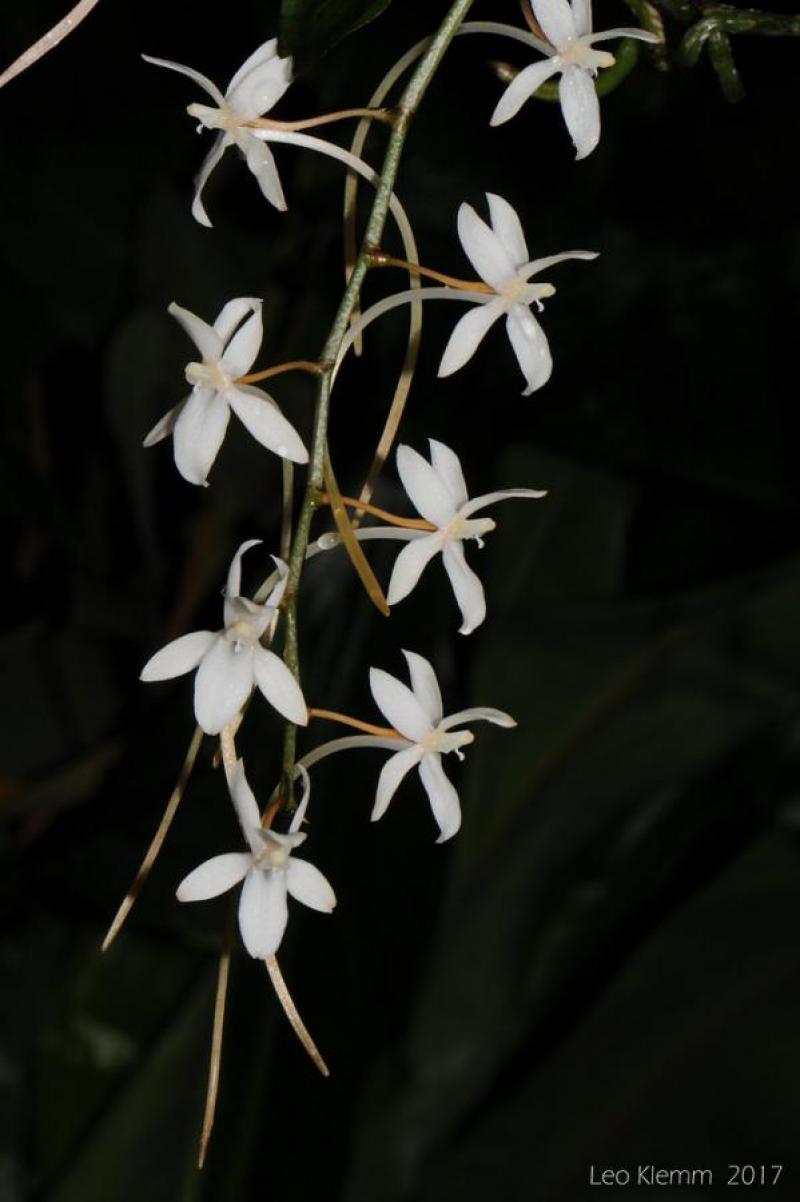Aerangis mystacidii
Also known as: The Mystacidium or Angraecum saundersiae Angraecum pachyurum Aerangis mystacidioides Aerangis pachyura in the subfamily: Epidendroideae
Native to: Malawi Mozambique South Africa Zambia Zimbabwe
General Information
The Mystacidium is a miniature monopodial cool to hot growing epiphytic orchid belonging to the sub family Epidendroideae native to Malawi, Mozambique, South Africa, Zambia, and Zimbabwe.
Plant Description
Monopodial. Grows to 0.2-10cm. Each new growth has numerous arching lance shaped, oblong shaped leaves that grow to 1-25cm long
Flowers
Numerous blossoms appear during Summer and Autumn
Blooming Season
- Autumn
- Summer
Substrate(s)
- Coarse
- Bark
Care Notes
These orchids like to be kept on the dry side, but may need to be watered daily during warm weather, and prefer a well draining mix or also do well mounted, provided they can be watered regularly.
These are quite a forgiving orchid, there are no special requirements to get this orchid to flower, just good care and consistent conditions. Larger plants may be more fussy and can react poorly to change; a poorly timed repotting, a pest infection or an unusually hot day can set them back for a couple of years. However, even plants that have been treated poorly can thrive, and if they are set back they often recover much stronger then they would otherwise be.
Climate
Grows at low to high elevations. Rainfall ranges from 28mm to 130mm per day, heaviest in September and lightest in January. Humidity ranges from 63% to 77%, highest in September and lowest in December. Temperature ranges from 5C to 21C, highest in July (14C to 21C) and lowest in January (5C to 16C).
Watering
These orchids are sensitive to excessive watering and should only be watered when they look thirsty. Water infrequently and ensure that the roots are dry before watering. Keep an eye on them especially during hot weather as overwatering can lead to rot, whereas underwatering may result in wilting or shriveling, which while unattractive, will not kill the plant.
Fertiliser
Apply liquid based fertiliser per recommended directions. They can benefit from a high phosphate fertiliser leading up to flowering season, followed by a high nitrogen fertiliser when new growth appears, and a balanced fertiliser in other times. These orchids can also tolerate slow release fertiliser applied 1-2 pellets per cup (250ml) of media.
Use balanced fertiliser during Spring and Summer. Apply fertiliser regularly at half strength year round. Use a high Nitrogen fertiliser during Spring and Summer. Use a high Phosphorous fertiliser during Summer.Potting
Due to the growth nature of these plants they are best mounted onto cork, tree fern slabs, or even trees if the climate suits. Water regularly especially in hot weather.
This plant does very well in baskets or suspended pots This plant does well mounted to Tree trunks or Fern slabs. Repotting is best done annually.





















